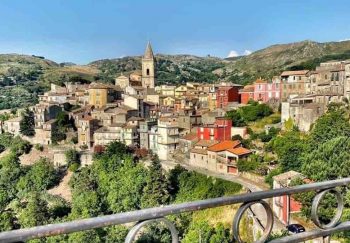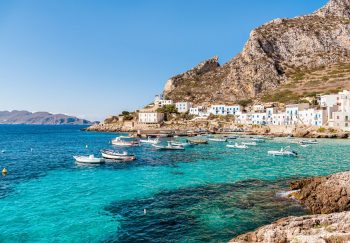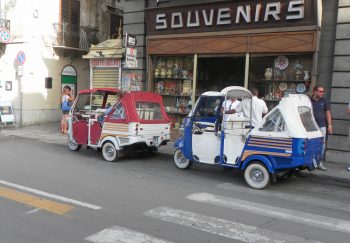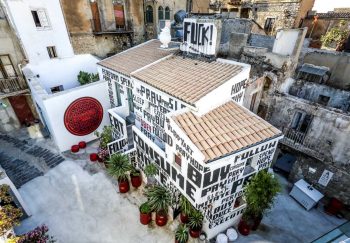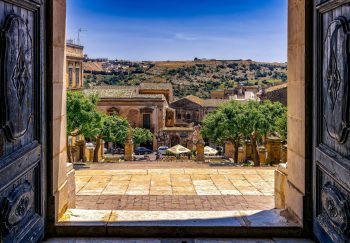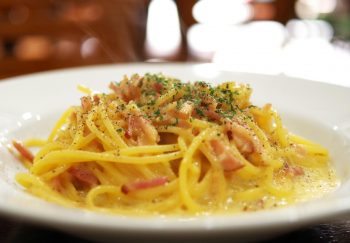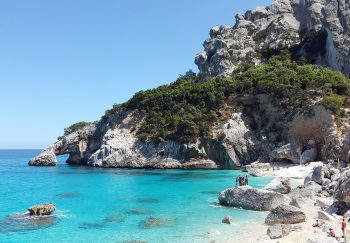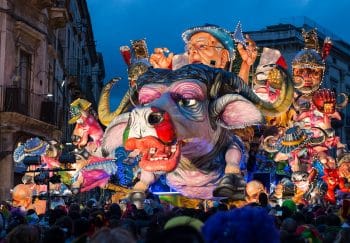You may be distracted by the ocean and miss this place if you travel from Trapani into Agrigento, or vice versa. You’ll see a few hills as you approach the Exit Sambuca di Sicilia. Then, there is the stunning scenery of a valley full of vineyards. There are also the Lago Archio and Mount Genuardo. In the middle, you will find a village with just a few thousand people.
It was originally Zabut, which is the Arabic name for the ancient castle. This name was given by the Emir Al-Zabut ( The beautiful), who named the conquered territories. The origins of the name are also linked to the Sambuca, a small Greek instrument that is similar to a harp and which reminds us of the old city’s urban map or the sambuco plant spread downriver.
Let’s go into the labyrinthine of Saracens alleys and feel a timeless atmosphere…
The country is divided into two parts: the Arab “inside” elements which are designed with Zabut fortress houses until the sixteenth century and the one “outside” Zabut with the town hall of the seventeenth-century.
Let’s begin the tour with the nineteenth century Idea Theatre at the end of Corso Umberto I.
The thirteen churches are located along the main road between the stately buildings and the arches connecting the main streets to courts.
Halfway through Corso Umberto 1 we find the Di Leo, Oddo Palaces, and The Church of St. Joseph. They are surrounded by a rich whitestone portal in Chiaramonte style.
On the other side, we find the Church of Concezione: a magnificent lancet doorway of Chiaramonte-inspiration coming from the church of St. Nicolo in the ancient village of Adragna. There are some interesting sculptures from the eighteenth century inside.
We also find the magnificent buildings: the Palazzo Rollo with its arched courtyard and staircase; the Palazzo Giacone with private courtyard, double Catalan staircase and the imposing Palazzo Fiore. The Palazzo Campisi was constructed in the second half the nineteenth century.
The Church of St. Caterina d’Alessandria is one of the oldest churches. It has a baroque Church of St. Caterina d’Alessandria floor, made of glazed tiles from the majolica factory of Burgio.
The tour continues with the Casino for the Marquis Beccadelli. We see a baroque terrace with sinuous forms, and a Catalan courtyard which dates back to the Spanish typologies. This building is part of a larger group which also includes the 16th-century Church of St. Rocco, St. Sebastian tower, and the hospital.
The Church of Carmine, which contains the remains of the aristocratic families and wooden and marble statues, is also available. Anna, from the mid-seventeenth-century, and the Madonna dill’ Udienza, from the second half of the sixteenth century in Gagini.
Retracing our steps, we see the 19th-century Ciaccio Palace as well as the stunning front of the Church del Purgatorio (1631), which is now the Museum of Sacred Art.
The eighteenth-century Oddo Palace or dell’Arapa Palace is the venue for the town hall. As the streets network thickens and becomes entangled, it opens up uneven widenings. We are in the Arabian neighbourhood, which was originally home to seven Saracen alleyways. The Amodei Palace is located to the left of the plaza. It has its own courtyard and is just before the Church of San Michele. This church preserves the equestrian statue St. Giorgio (1596), which was donated by the Lo Cascio siblings.
The tower of the castle, which was later transformed into the Panittieri Palace dates back to the 16th century. The main floor houses the archaeological museum.
We return to the Navarro plaza after reaching it. A casbah is a narrow network of streets in the Arab neighborhood. It has one- or two-story houses, rampant external stairs, and roofs made from Sicilian tiles. These passages lead to the purrere ancient quarries of sunken cities.
The Church del Rosario is located in the vicinity. It includes a 1752 churchyard and a wooden door with carved panel doors. On top of the hill is the Mother Church. This church has been closed since 1968 after the earthquake in Belice. It tells the story, despite the leaks in the stones and decorations on the tower, of the place’s history, which includes a first Arab castle, a fortified palace and a palatine chapel.
Let’s enjoy the vastedda of Belice Valley, string cheese and country cooking with local quality wines before we go.
This is the traditional dish or dessert of the village. The minni di Virgini, Sicily’s gastronomic symbol, is Sambuca. The name means “The breasts of Virgin Mary” in Italian dialect. Contrary to what the name implies, the dessert is not disrespectful to the Virgin Mary. Instead, the minni were created by Sister Virginia Casale di Rocca Menna of Colleggio Maria. In 1725, the Marquise de Sambuca commissioned her to create a unique and original cake for Peter’s wedding.
Sister Virginia was inspired to create a hill-shaped cake by the views of the hills from her bedroom window. She created a cake with a hill shape, filled with ricotta, chocolate, and zuccato and topped with icing sugar.
The production of wine is very prestigious. It has been a key part of the economy for the region over the centuries and continues to be so today with the opening of new vineyards.
A few kilometers away is the Cretto di Burri, an example of contemporary land art, created by Alberto Burri, in the old town Gibellina.
Instead, trekkingactivities can be done at the nearby Natural Reserve Monte Genuardo.
